

Max Davies
2025 Lexus NX450h+ F Sport review
26 Days Ago
Mitsubishi essentially invented this segment, but the old Outlander PHEV felt, well, old. The new generation is a huge step up.
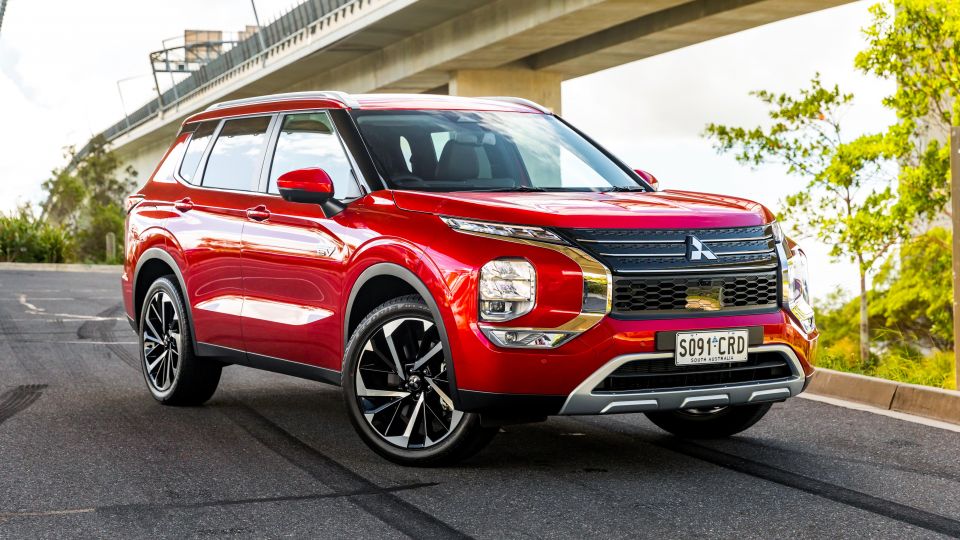


Quickly see how this car stacks up against its competition. Select any benchmark to see more details.
Where expert car reviews meet expert car buying – CarExpert gives you trusted advice, personalised service and real savings on your next new car.
The Outlander Plug-in Hybrid EV(or PHEV) is easily the most impressive vehicle Mitsubishi produces today.
While in years past we would have singled out now departed models like the 3000GT and Lancer Evolution, Mitsubishi’s focus on the SUV and ute segments and those exciting cars – and indeed, almost all of its passenger cars globally – have disappeared.
That’s not to say the Outlander PHEV is merely the least boring of a boring assortment of vehicles.

It won’t set your pulse racing, but it’s an impressive follow-up to a first-generation model that effectively created this segment.
When the first Outlander PHEV arrived here in 2015, it had no competition. Now, the new car faces a bevy of rivals, even as plug-in hybrid vehicles live in the shadow of their vastly more popular hybrid and battery-electric counterparts.
With this second generation, Mitsubishi has done quite a bit to stay on top, even beside the chunky, purposeful new styling.
The biggest hurdle plug-in hybrids face, besides the fact a large chunk of the population has no idea what they are or why they’re worth buying, is their pricing.
The Outlander PHEV range is priced from $54,590 to $68,490 before on-road costs, with our second-from-base Aspire priced from $60,990 before on-roads. That’s $15,500 more than an equivalent petrol-powered, all-wheel drive Aspire which also happens to have two extra seats – you can finally get a three-row Outlander PHEV, but only in fancier Exceed and Exceed Tourer trims.
That is a whopping increase but, sadly, that’s the norm for plug-in hybrids in Australia. Unlike some countries, there’s an almost complete absence of government incentives towards plug-in hybrids here.
Mitsubishi also cautions future PHEV stock releases may have different specifications and/or pricing, citing “unprecedented local demand, compounded by global component supply shortages”.
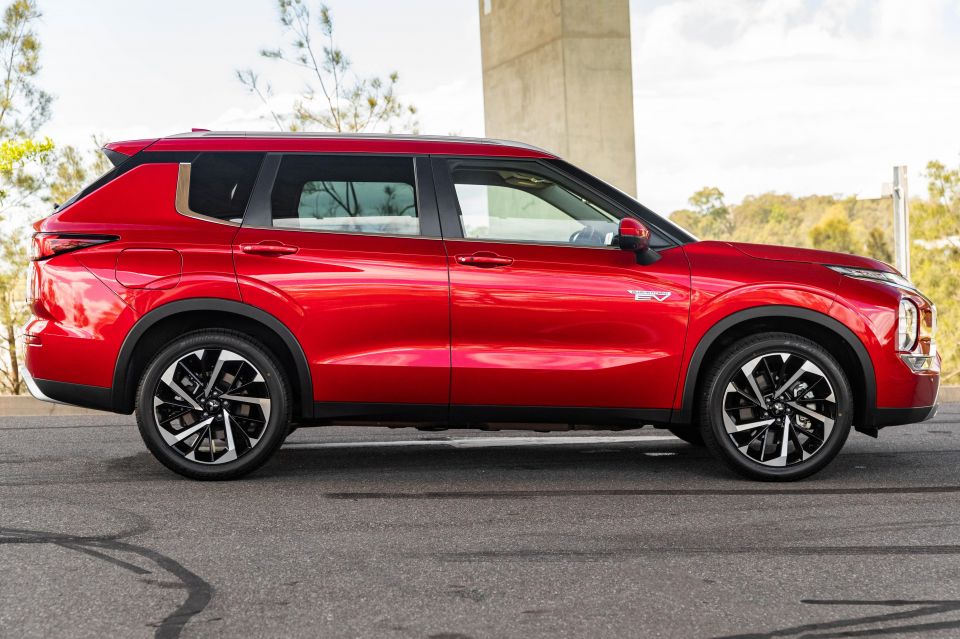
Our tester was finished in Red Diamond, one of three paint finishes – White Diamond and Black Diamond being the others – that’s priced at $940. Cosmic Blue, Sterling Silver and Titanium are slightly cheaper at $740, while solid white is standard.
Based on a Sydney postcode, our tester rang up at $67,100 drive-away.
Currently, PHEV rivals include:
All prices exclude on-road costs unless specified
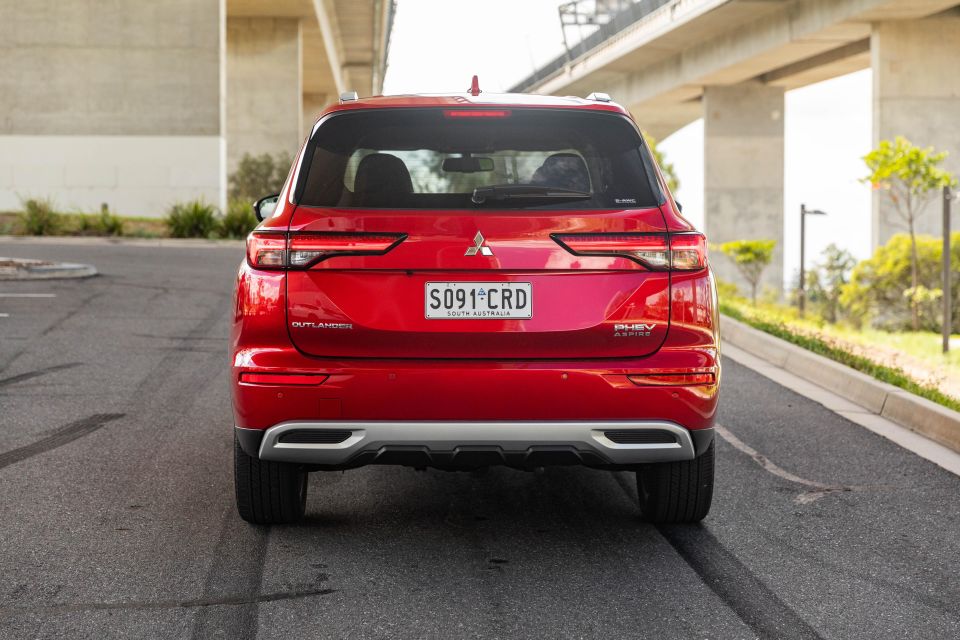
Notably, only the Outlander and 3008 have all-wheel drive. There’s a wide range of mid-sized PHEVs offered overseas that have yet to come here, including plug-in versions of the GWM Haval H6, Hyundai Tucson, Kia Sportage, Toyota RAV4 and Volkswagen Tiguan.
While the Outlander PHEV offers all-wheel drive over the Cupra, Ford and MG and a much lower price than the Peugeot, it commands a significant premium over electrified mid-sized SUVs that don’t need a plug.
The Toyota RAV4 – at least until the updated model arrives later this year – tops out at $52,700 before on-roads for the Edge AWD Hybrid. The Nissan X-Trail e-Power with e-4orce, due here early in 2023, is priced between $54,190 and $57,190 before on-roads.
Mitsubishi also offers a version of the old Outlander PHEV’s powertrain in the Eclipse Cross Plug-in Hybrid EV. It’s smaller than the Outlander, but easily one of the biggest vehicles in its segment, and is priced from $46,990 to $54,490 before on-road costs.
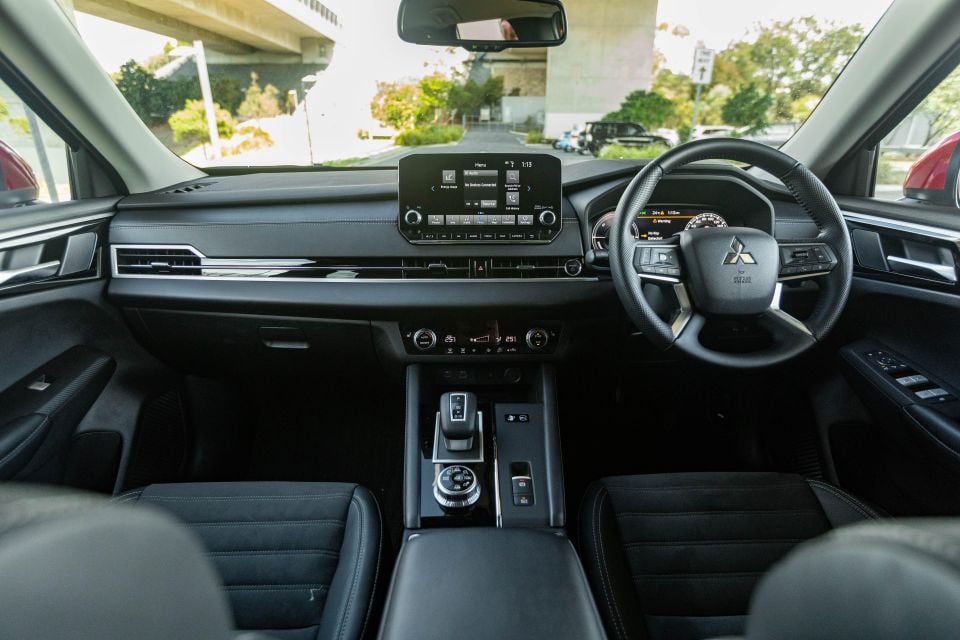
Nowhere is the Outlander PHEV’s transformation from first to second generation more tangible than in the interior.
The old car’s cabin was competitively roomy, with some soft-touch materials and a centre stack helpfully angled towards the driver. That’s where the positives ended.
Overall, it had a dreary cabin that felt old and cheap, from the dated dashboard design to the thin, hollow-feeling doors.
The new car’s doors feel much more substantial, and feature soft-touch trim and leatherette inserts. The door cards have a bit of flex to them, but overall they’re much nicer.
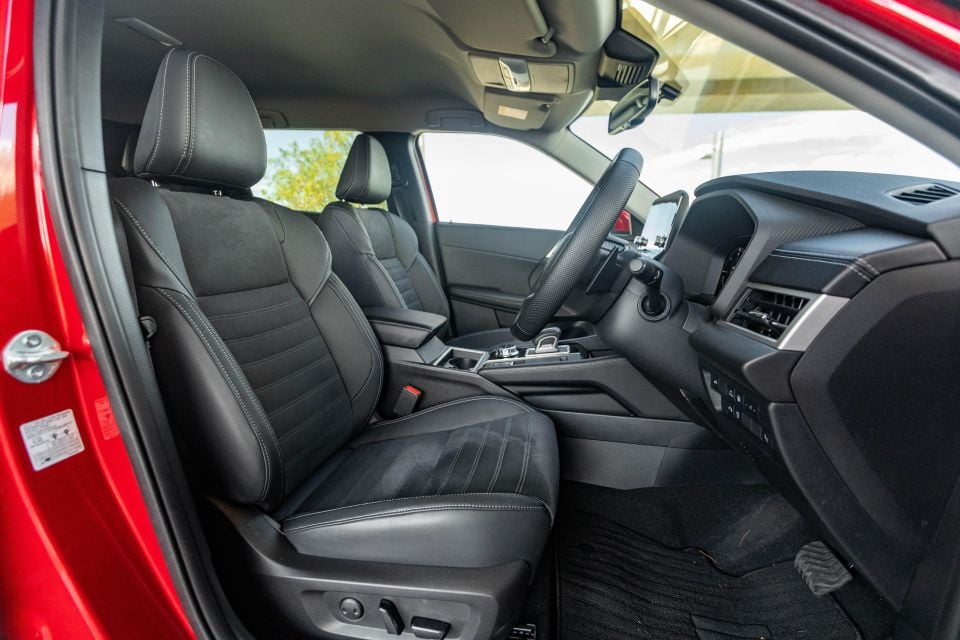
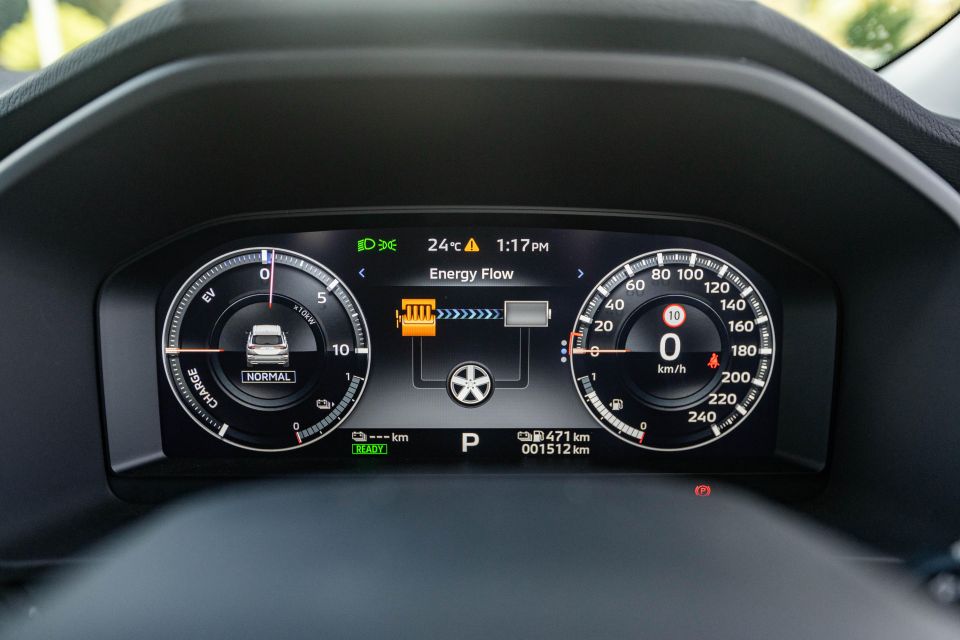
Indeed, almost every surface in the Outlander’s cabin is covered in soft, often squishy plastic or leatherette. This includes the sides of the centre console and the top of the dashboard.
The Aspire misses out on leather upholstery, but the Microsuede trim is a more than satisfactory substitute and the front seats are still heated. They’re comfortable, too.
Gloss black trim has been applied more sparingly than in the Eclipse Cross, though you’ll still find it around the touchscreen, climate controls and the shifter. Carbon fibre-look trim surrounds the window controls.
The climate control dials have a metallic look to them that reminds me of pie trays, but they don’t feel chintzy. We’re also just grateful to see physical climate controls.
Start up the Outlander PHEV and it plays a cute little steel drum-like riff as an animation of the vehicle appears in the attractive, functional 12.3-inch digital instrument cluster.
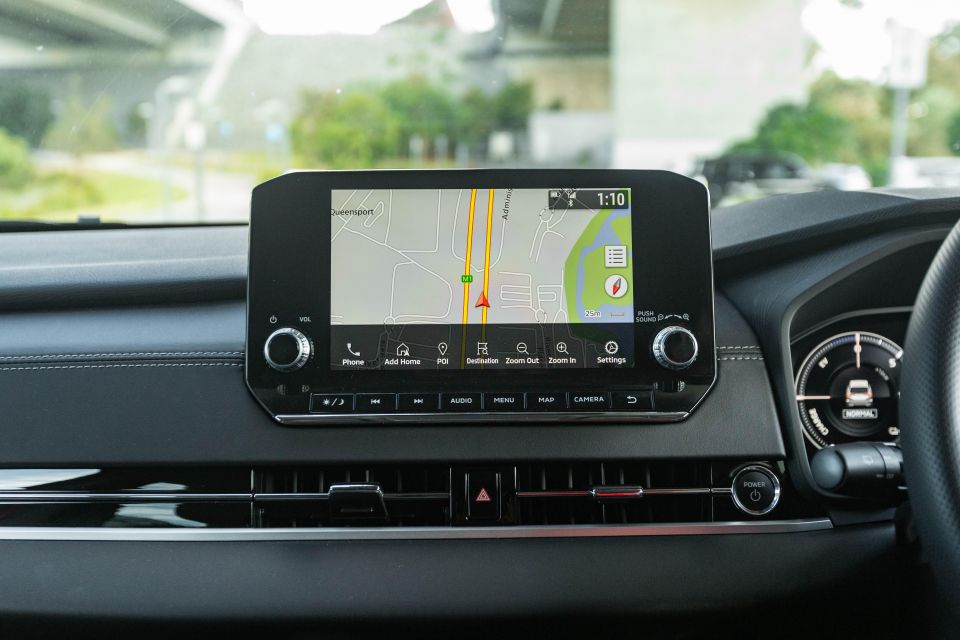
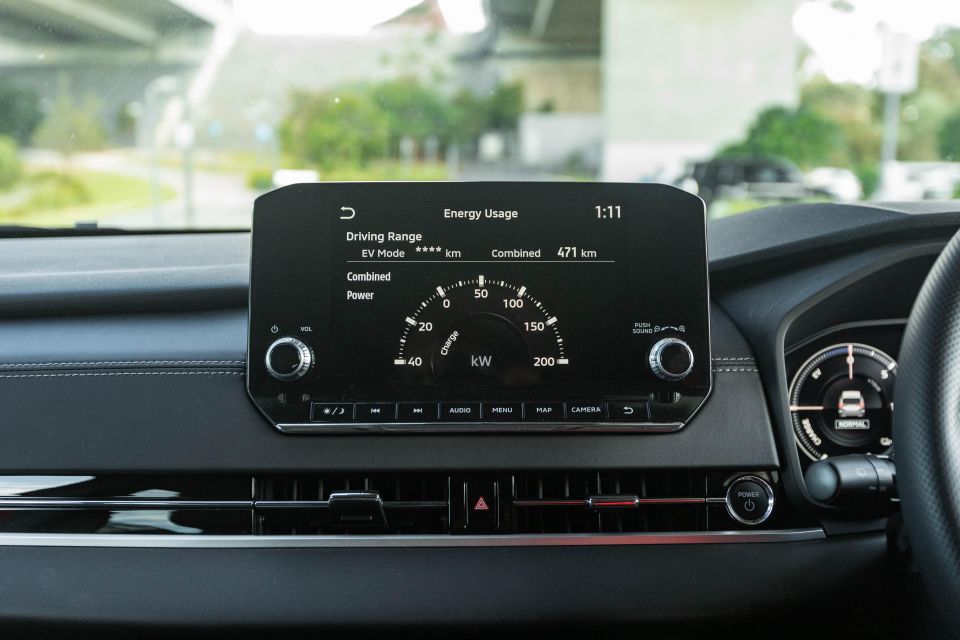

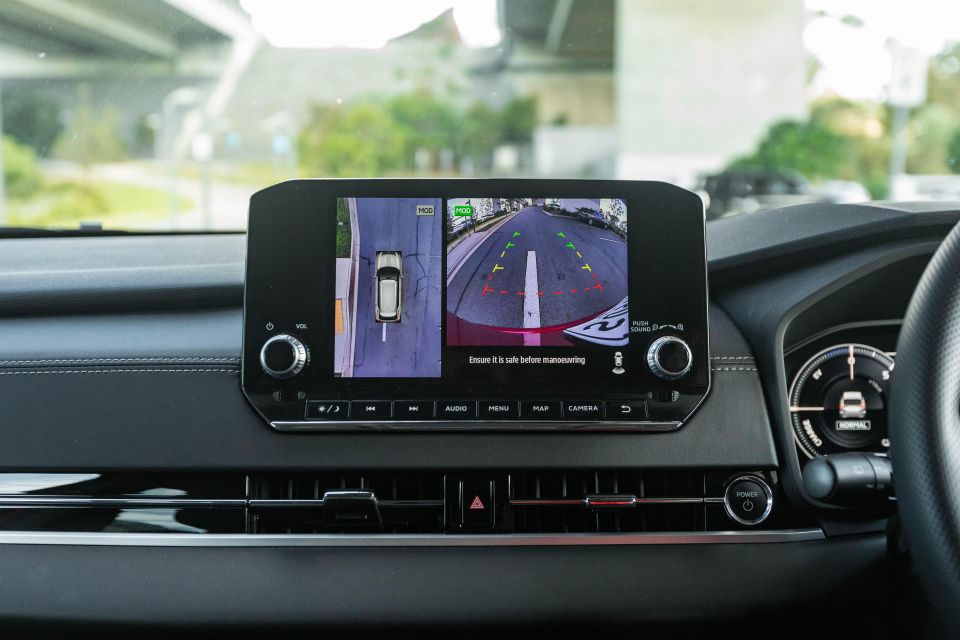
The infotainment system is somewhat less impressive, though still a massive step up from the old Outlander’s dated unit.
It offers a customisable home screen plus physical shortcut buttons, though the interfaces are a bit cluttered. It’s not as slick as some rival systems, but the presence of a higher-resolution surround-view camera and wireless Apple CarPlay is much appreciated – though Android Auto still requires a cable to connect.
In terms of storage, there’s a decently large centre console bin and glove compartment, little slots down the side of the centre console wide enough to stash a wallet, and bottle holders in the doors large enough for 1L bottles.
At the base of the centre stack there’s a wireless charging pad that’s nice and open, plus single USB-A, USB-C and 12V outlets.
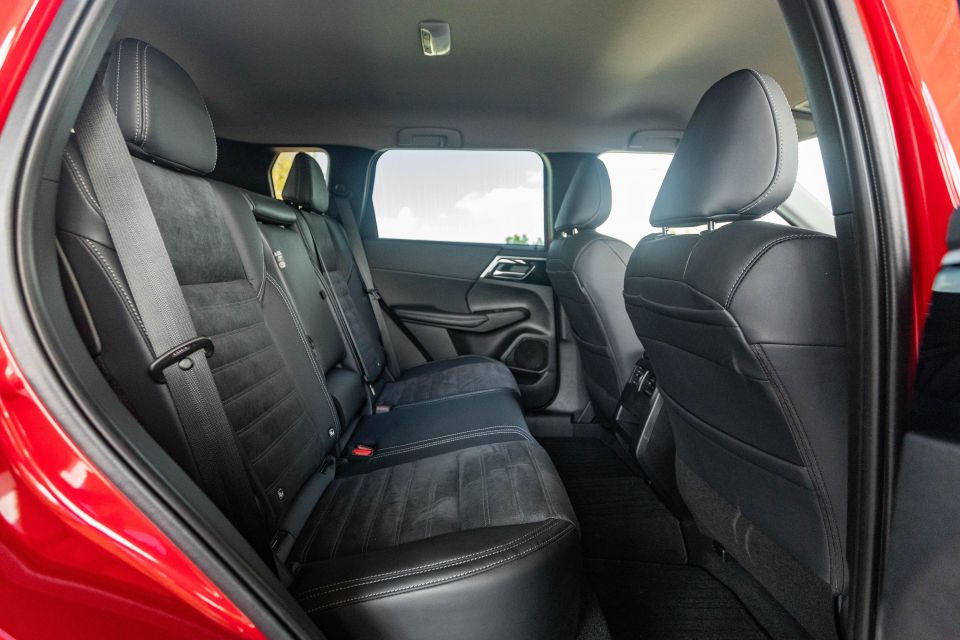
Step into the second row and the PHEV feels no less spacious than the regular Outlander, with plenty of headroom and legroom and a relatively flat floor. Headroom is good even in the centre seat, which also avoids feeling too firm.
There’s a 1500W 240V outlet back here, which you can use to run, for example, a laptop charger. There are also air vents, single USB-A and USB-C outlets, and map pockets on the front seatbacks, as well as three top-tether and two ISOFIX anchor points for child seats.
Open the tailgate and you’ll find 485L of cargo space to the top of the second row seatback, expanding to 1478L – measured to the roof – with the second row folded.
The cargo bay measures 985mm long and 1380mm wide with the second row up, while underneath the load floor is a tyre repair kit – no spare is offered.

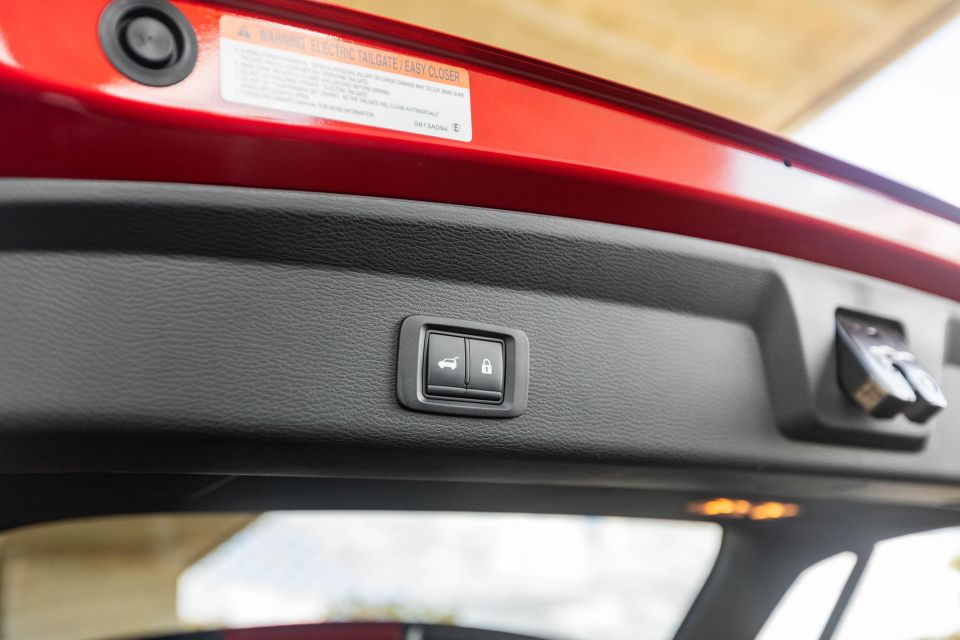
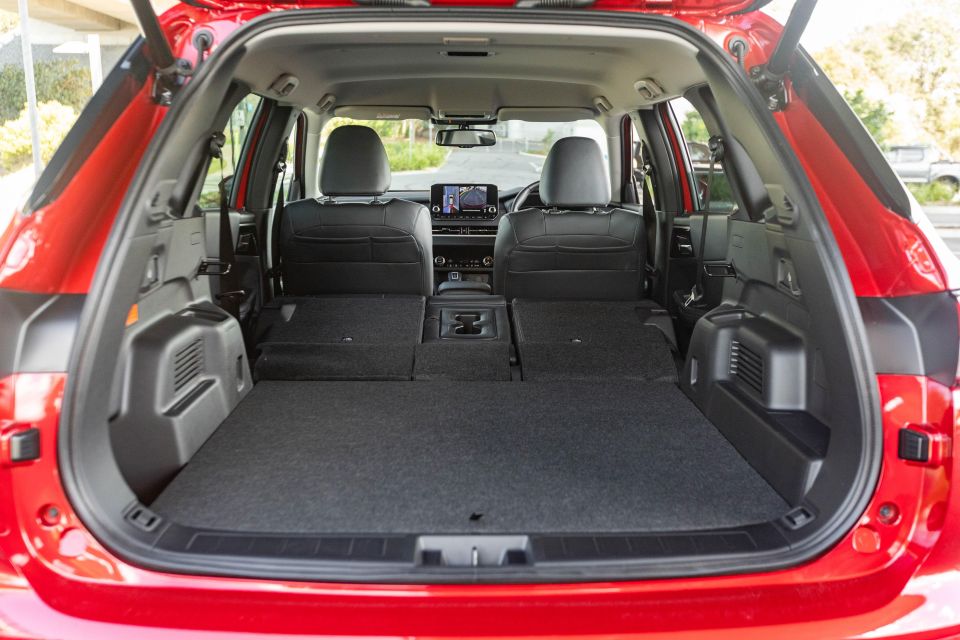
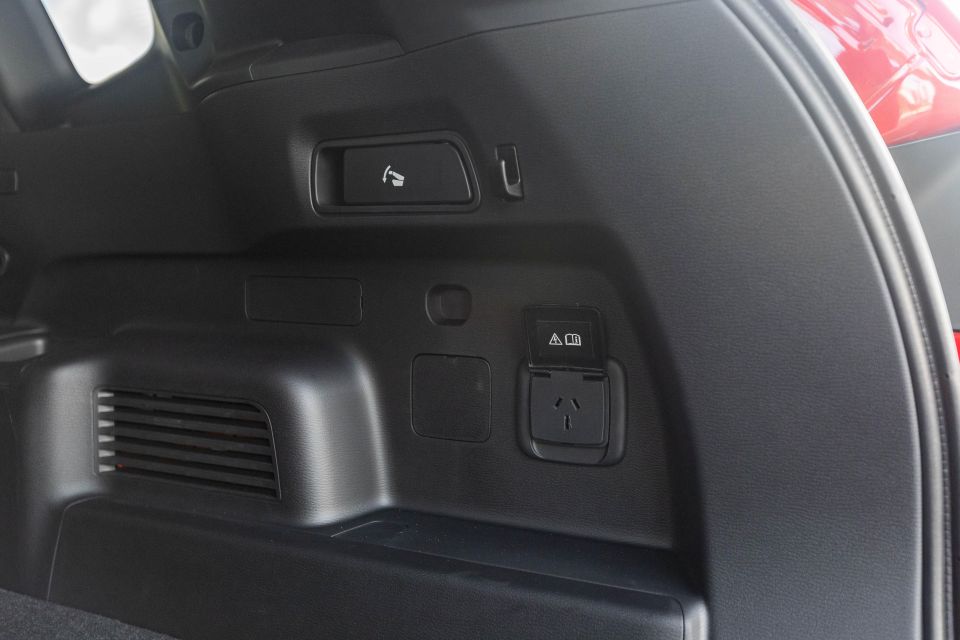
The Aspire doesn’t have a third row but we know from experience the third row in the Exceed and Exceed Tourer’s standard third row is bordering on useless. Those variants do, however, get a sliding second row the Aspire misses out on.
Another 1500W outlet can be found in the boot, along with levers to drop the second row.
Speaking of power, the Outlander PHEV has both Vehicle to Grid (V2G) and Vehicle to Home (V2H) capability.
The former allows the vehicle to feed energy back to the grid at a constant rate of up to 10kW, while the latter can also provide up to 10kW of energy to power your home. This functionality can come in handy during power outages.
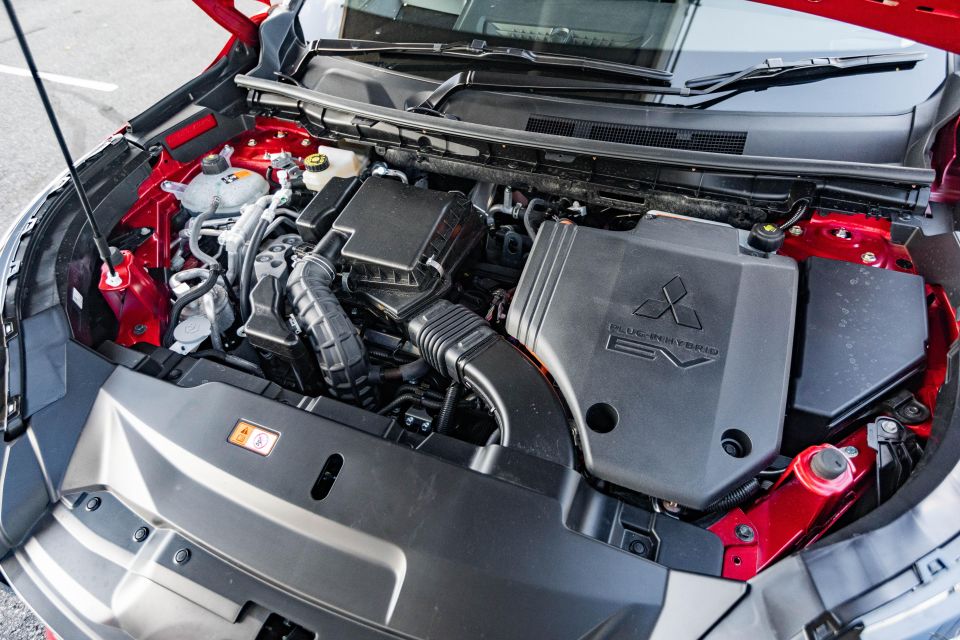
The Outlander PHEV combines an Atkinson cycle 98kW 2.4-litre four-cylinder petrol engine with a 20.0kWh lithium-ion battery pack and twin electric motors, providing all-wheel drive.
The two electric motors produce 85kW and 100kW, making for total system outputs are 185kW and 450Nm. A single-speed transaxle located on the front axle features a single fixed gear for the differential drive and another single gear for the generator drive, allowing the PHEV to work as either a series or parallel hybrid.
As a series hybrid, the vehicle is driven by the motors using electricity generated by the engine. As a parallel hybrid, the vehicle is driven by the engine which is in turn assisted by the motors. Regenerative braking features, converting brake force into electric energy to charge the battery.
A selectable Save mode allows you to conserve battery charge for later, while Charge mode uses the combustion engine to drive a generator and charge the battery.
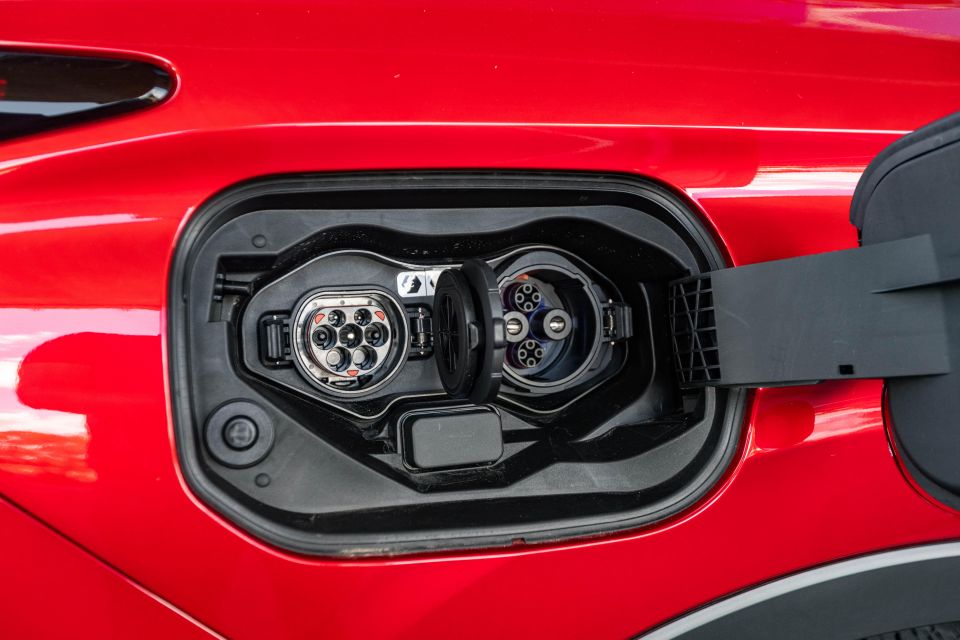
While the basic formula of the old Outlander PHEV has been used, there have been a multitude of improvements.
The electric motors produce 15kW and 30kW more than the old units, the battery is up from 13.8kWh to 20kWh, there’s a new battery cooling system, and the fuel tank has grown from 45L to 56L.
The result is significantly improved range – up from 54km to 84km, albeit still measured on the more lenient NEDC cycle.
It persists with a CHAdeMO port, increasingly uncommon in the PHEV and EV world. Mitsubishi says it’ll take 38 minutes to charge from 0 to 80 per cent on a DC charger.
Claimed fuel consumption is 1.5 litres per 100km, though this is calculated applying the vehicle’s available electric range.

Over around 200km of driving, during which we drove on a mix of inner-city and suburban roads and highways, we eventually ran down the battery to zero per cent and overall recorded fuel consumption of 6.1 litres per 100km and energy consumption of 22.2kWh/100km.
Over a roughly 50km loop consisting of similar driving environments, and with a depleted battery, we averaged 7.2 litres per 100km and energy consumption of 19.6kWh/100km.
Neither fuel consumption result is as good as a RAV4 Hybrid’s claim, with the Outlander PHEV likely held back by its portlier kerb weight.
Braked towing capacity is 1600kg and unbraked is 750kg, both figures identical to petrol Outlanders.
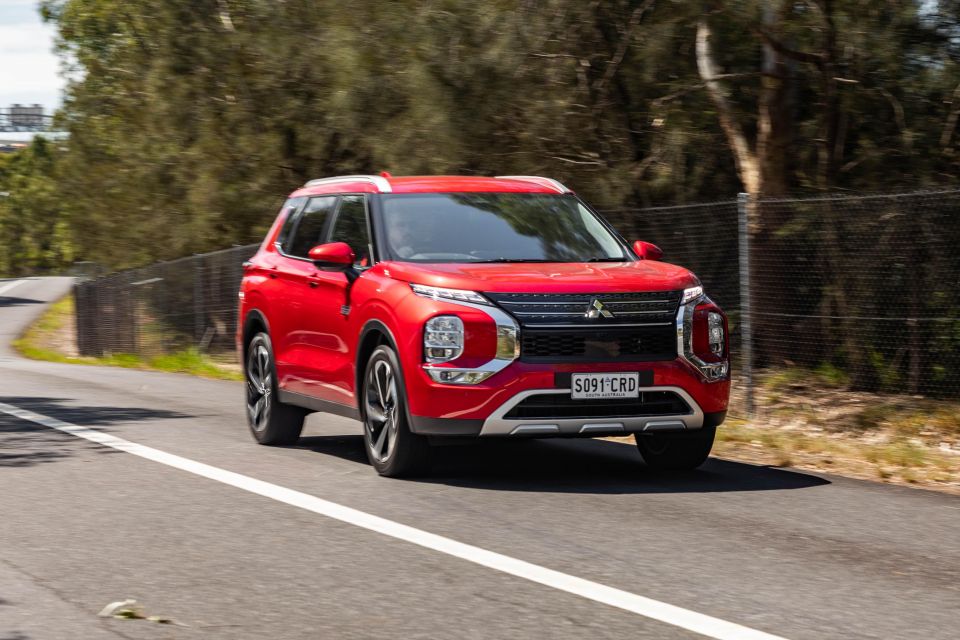
When it comes to refinement, the Outlander’s plug-in hybrid system is excellent.
That doesn’t just apply to the PHEV running in EV mode, but also when it’s operating as a series or parallel hybrid.
We allowed the battery to run down and didn’t charge it, at which point it is still capable of operating under electric power – it retains around 20 per cent capacity to support full-throttle applications.
As a result, we still observed the PHEV running on electric power at speeds of up to 60km/h. Even when coaxing the engine into operation, the transition between petrol and electric power is seamless, and sometimes you have to look at the instrument cluster to even be able to tell whether it’s on.

Where expert car reviews meet expert car buying – CarExpert gives you trusted advice, personalised service and real savings on your next new car.
There’s a dial, in lieu of a tachometer, that shows whether the petrol engine, electric motors, or regenerative braking is in use. Additionally, there’s a more detailed energy flow meter in the cluster that tells you what’s happening underneath – whether the petrol or electric motors are sending power to the wheels, and whether energy is being fed back to the battery.
Noise from the petrol engine is quite well-suppressed in regular driving, though you can hear some wind noise and electric motor whirring at highway speeds. The Ecopia tyres can also squeal a bit in more spirited driving.
Despite a kerb weight of 2108kg, or 383kg more than an all-wheel drive, petrol-powered Aspire, the PHEV Aspire seems to ride better than petrol-powered Outlanders on the same 20-inch alloy wheels. The extra weight seems to tie down the PHEV more, removing the rather flinty feel of its petrol counterparts.
You feel the vehicle’s mass on some more dramatic undulations, and there’s a bit of a lumpy feel to the way it dispatches some surfaces like manhole covers. But over almost all the pockmarked pavement we drove the PHEV, as well as a handful of unsealed roads, it felt smooth and pliant.
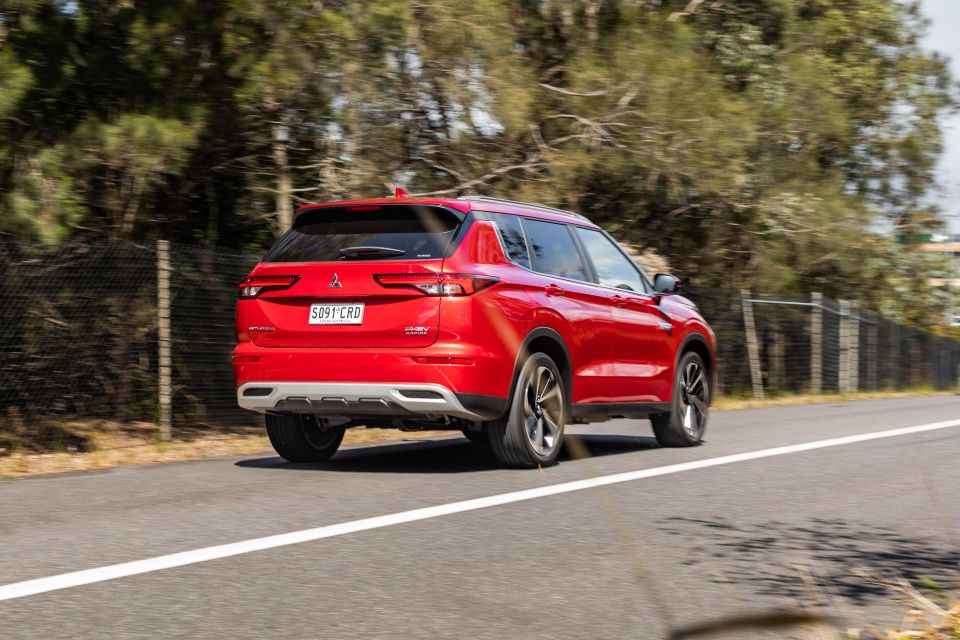
Considering the ride was one of my biggest criticisms of the last Outlander PHEV I drove – a previous-generation GSR – that’s laudable.
It offers superior ride comfort to its predecessor while also offering poised dynamics overall. It stays flat in cornering and is surprisingly enjoyable to drive.
Drive modes include Normal, Eco, Snow, Gravel, Mud, Tarmac and Power. A one-pedal driving mode of sorts – it doesn’t bring the car to a complete stop – is activated via an inscrutable button on the centre console that looks like a microchip with a ring.
The steering is a touch light and lacks a bit in feel but you become accustomed to it, though the wheel always feels disproportionately large. We’re not fans of the shifter, either, which feels slightly awkward to operate.
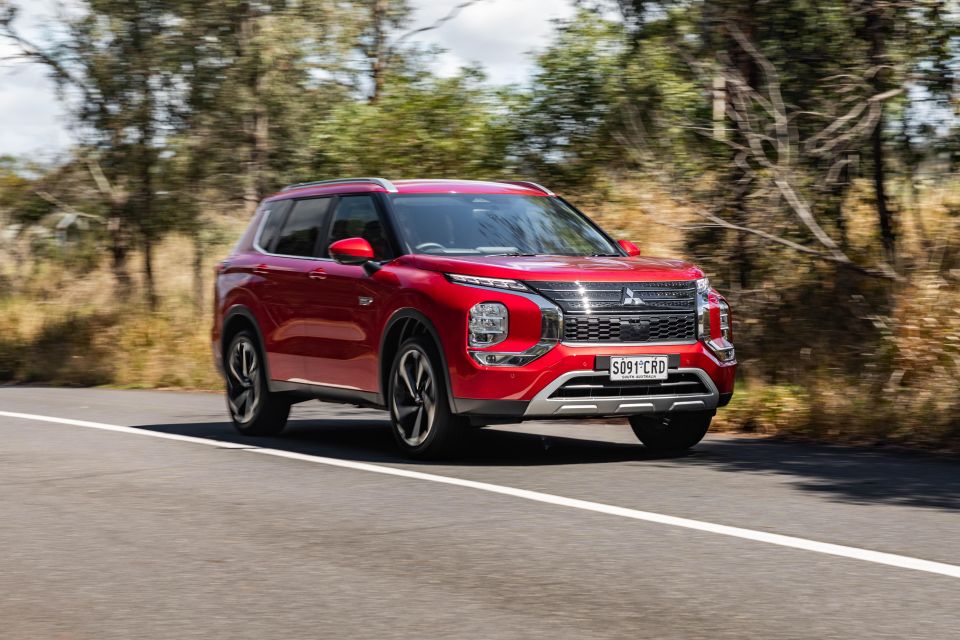
There’s a lane-keep assist system, which can be toggled on and off in the instrument cluster. It’s not a particularly assertive system, while there’s no Level 2 autonomy-like lane-centring system – a bit of a let-down, considering how common this is becoming in this segment.
It may lack lane-centring, but the PHEV boasts adaptive high-beam that works terrifically, casting light far and wide without dazzling oncoming motorists. We also like the view out the windscreen, as you peer out over a long bonnet that’s nice and squared-off, making it easy to see where the vehicle ends.
In all, the PHEV is not only an improvement over the old model, it’s quieter, more responsive and rides better than the petrol model.
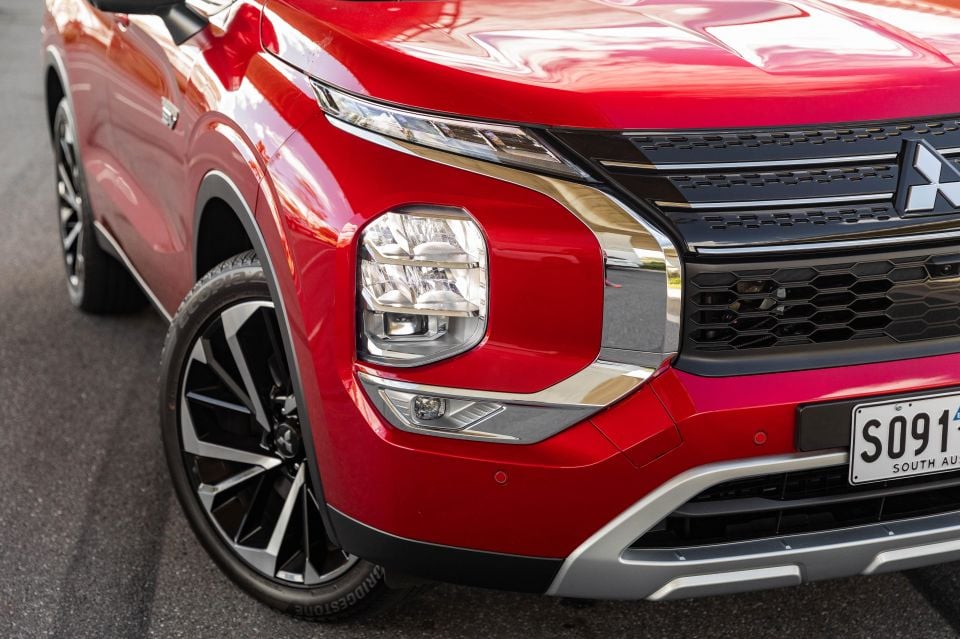
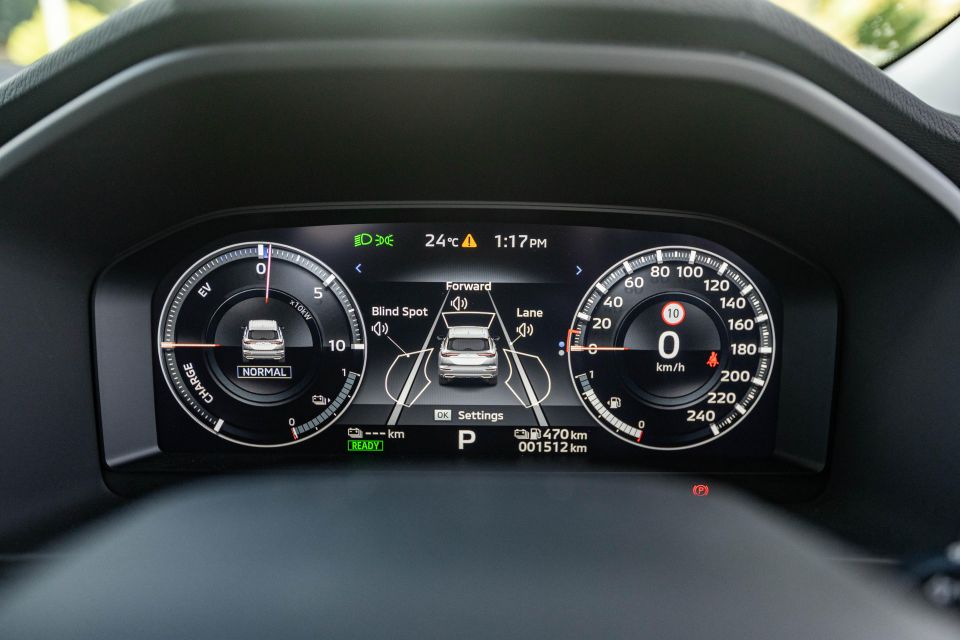
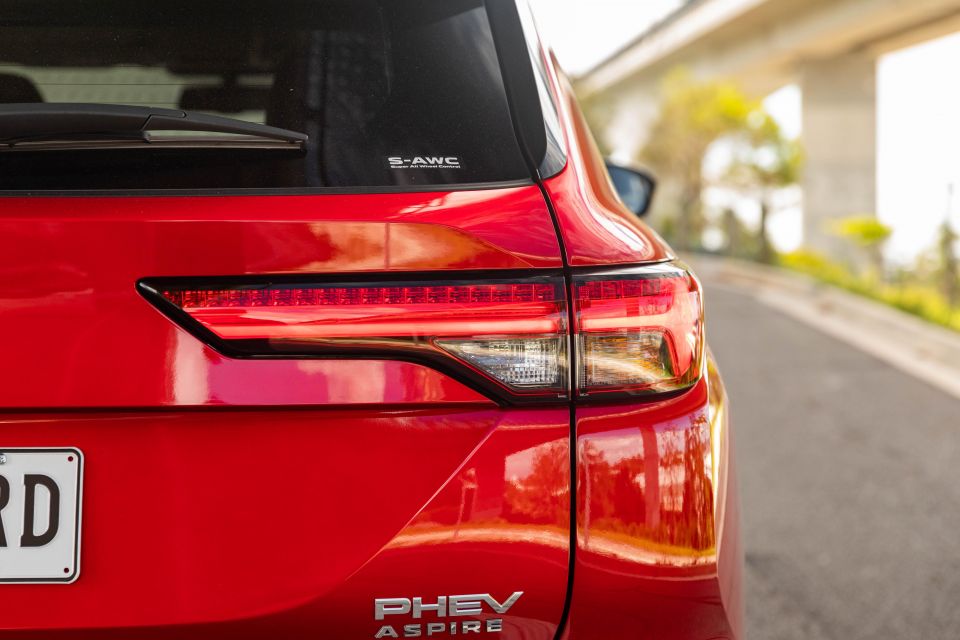

Outlander PHEV ES highlights:
Outlander PHEV Aspire (as tested) adds:
The Aspire also gains an AC power supply for the Vehicle to Load (V2L_ function, with two 1500W, 240V three-pin outlets.
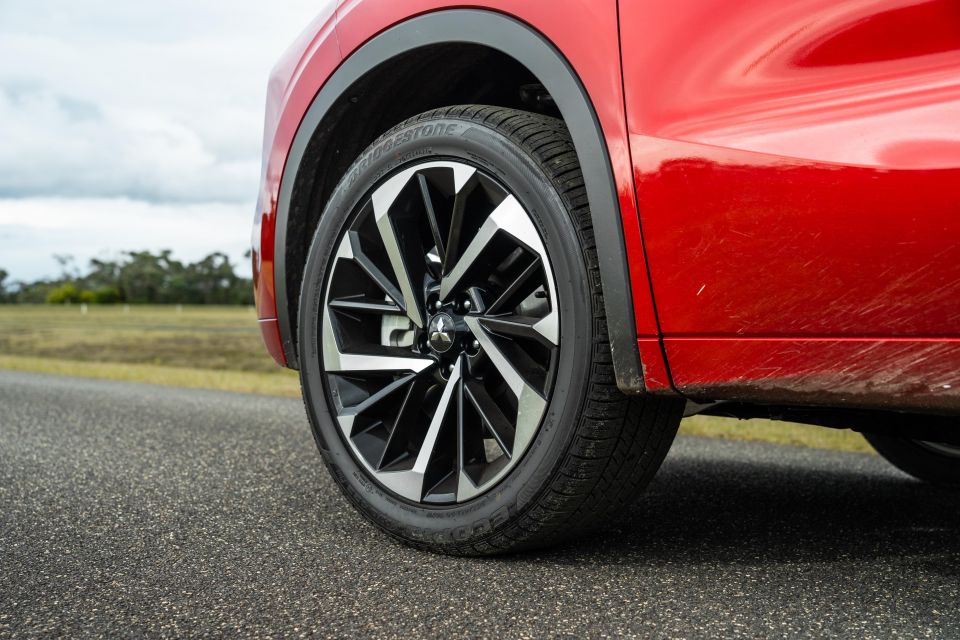
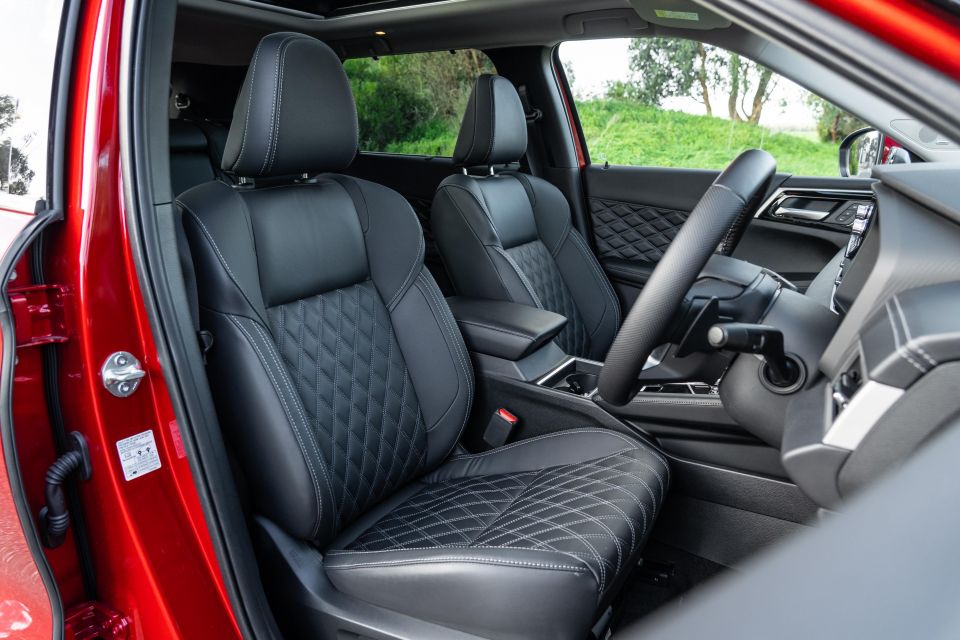
Outlander PHEV Exceed gains:
Outlander PHEV Exceed Tourer adds:
The MG HS Plus EV offers a compelling feature list at a lower price, even in top-spec Essence guise. It misses out on the Outlander PHEV Aspire’s adaptive high-beam and all-wheel drive but features ambient light, a panoramic sunroof, and the Traffic Jam Assist Level 2 autonomous driving feature.
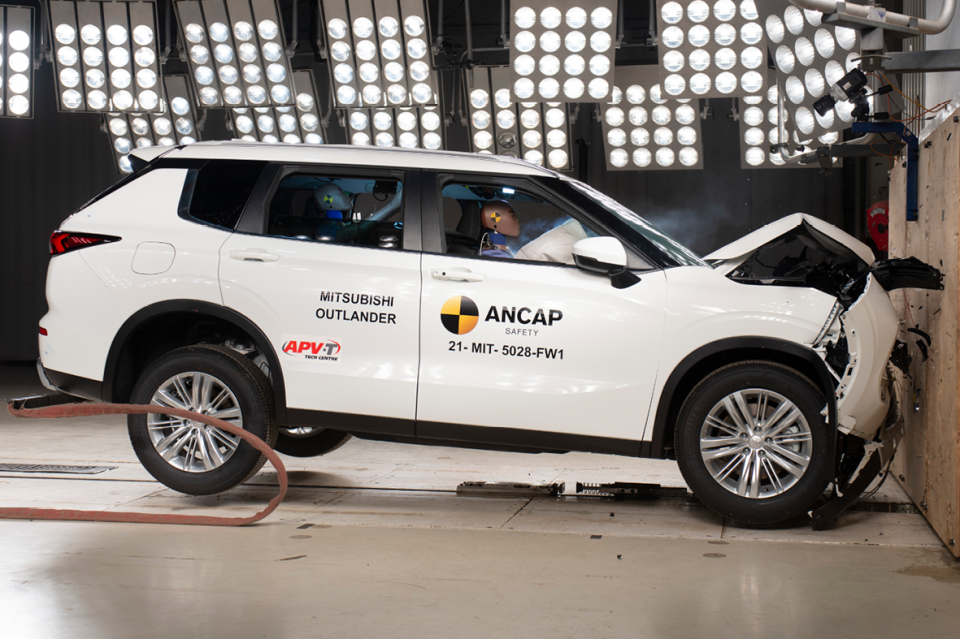
The Mitsubishi Outlander PHEV, like the petrol-powered model, has a five-star ANCAP safety rating.
It received scores of 83 per cent for adult occupant protection, 92 per cent for child occupant protection, 81 per cent for vulnerable road user protection, and 83 per cent for safety assist.
Standard safety equipment includes:
Outlander PHEV Aspire adds:
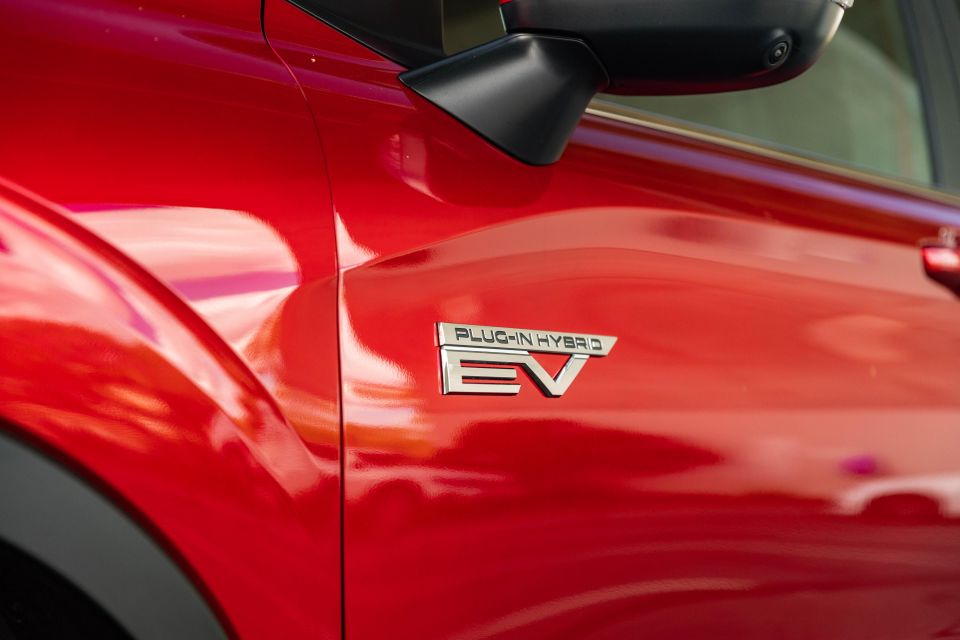
The Outlander PHEV is covered by a five-year, 100,000km warranty, though this is increased to 10 years/200,000km if you service within the Mitsubishi dealership network.
The high-voltage battery is covered by an eight-year, 160,000km warranty.
Mitsubishi offers 10 years of capped-price servicing, with intervals of 12 months or 15,000km. Each service costs $299 except for the sixth, eighth and 10th, which cost $599, $599 and $799, respectively.
With total service costs of $1495 over the first five years, the Outlander PHEV is cheaper than an Escape PHEV ($2035 over five years) and an HS Plus EV, which costs $1589 and has shorter 12-month/10,000km intervals.
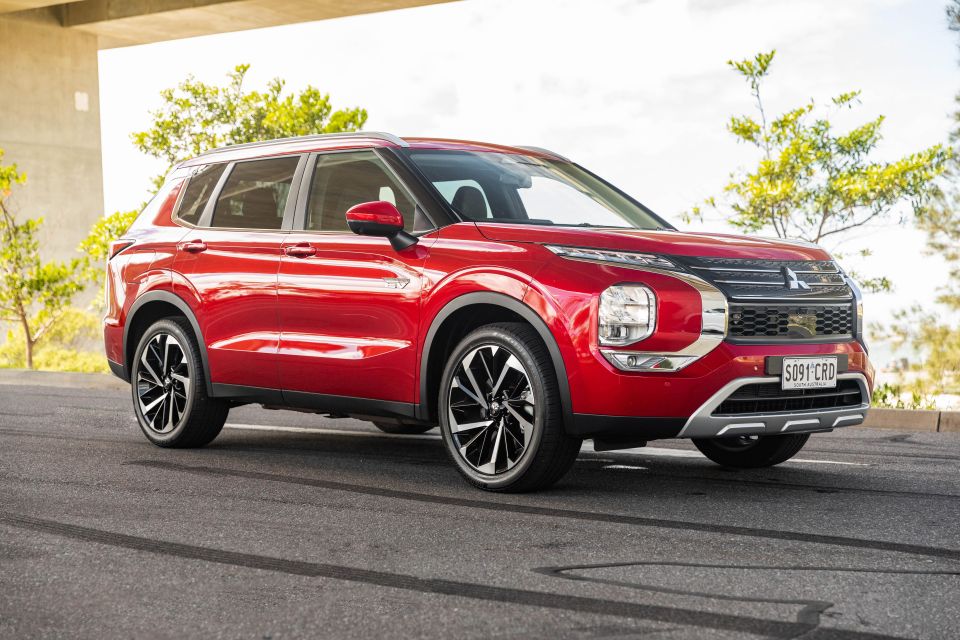
The Outlander PHEV can operate as an EV, a series hybrid or a parallel hybrid; there’s a one-pedal driving mode, multiple levels of regenerative braking, various terrain modes, as well as Save and Charge modes. It all sounds very complicated.
The good news overall is the Outlander PHEV is a particularly polished, straightforward vehicle to drive. There’s more range than before, so if your commute isn’t too long you can plug it in at home overnight and virtually never run it in anything other than EV mode.
Should you deplete the battery, the Outlander PHEV is able to seamlessly transition between petrol and electric power, though it doesn’t prove as fuel efficient as a lighter, simpler Toyota RAV4 Hybrid.
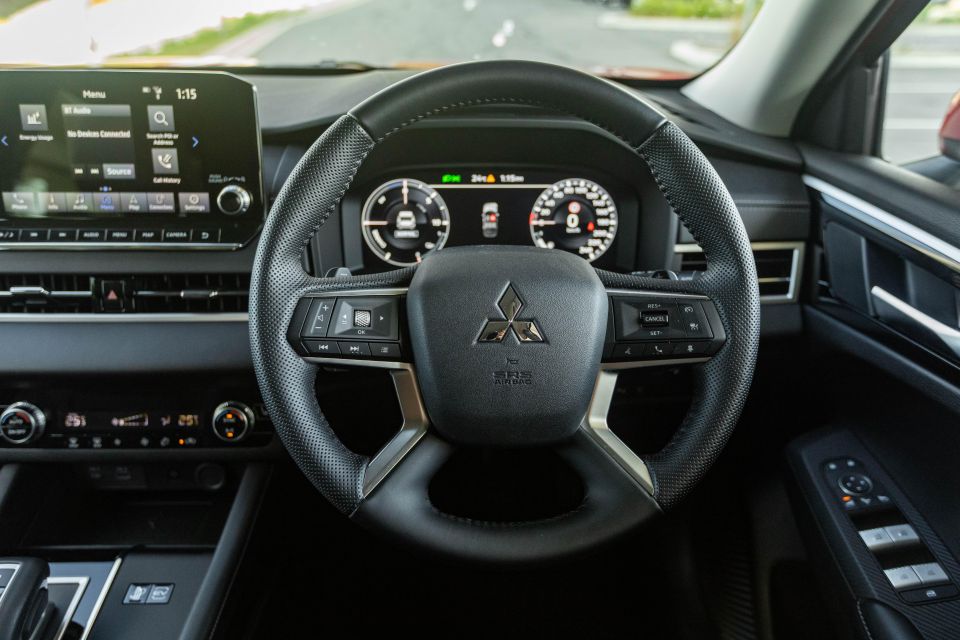
It’s also not nearly as affordable as one, while the MG HS Plus EV also significantly undercuts the Outlander PHEV despite offering plug-in power. Some buyers are choosing to just skip straight to battery-electric vehicles, too, and there’s increasing activity in the small-to-medium electric SUV space.
If you want the flexibility of both a petrol engine and electric propulsion, however, in a spacious, well-appointed package, the Outlander PHEV makes a compelling case for itself.
The presence of V2L, V2G and V2H technology adds to the PHEV’s allure, as does its standard all-wheel drive – something most of its rivals can’t match. Our Aspire tester also strikes the best balance within the line-up of equipment relative to the price.
Mitsubishi has been making PHEVs for some time now, only now it’s wrapped these clever mechanicals in a much more attractive and modern package. If a full EV doesn’t suit your needs, the Mitsubishi is well worth a look.

Click the images for the full gallery
Where expert car reviews meet expert car buying – CarExpert gives you trusted advice, personalised service and real savings on your next new car.
William Stopford is an automotive journalist based in Brisbane, Australia. William is a Business/Journalism graduate from the Queensland University of Technology who loves to travel, briefly lived in the US, and has a particular interest in the American car industry.


Max Davies
26 Days Ago


Andrew Maclean
15 Days Ago


James Wong
11 Days Ago


Max Davies
10 Days Ago


Paul Maric
7 Days Ago


James Wong
4 Days Ago